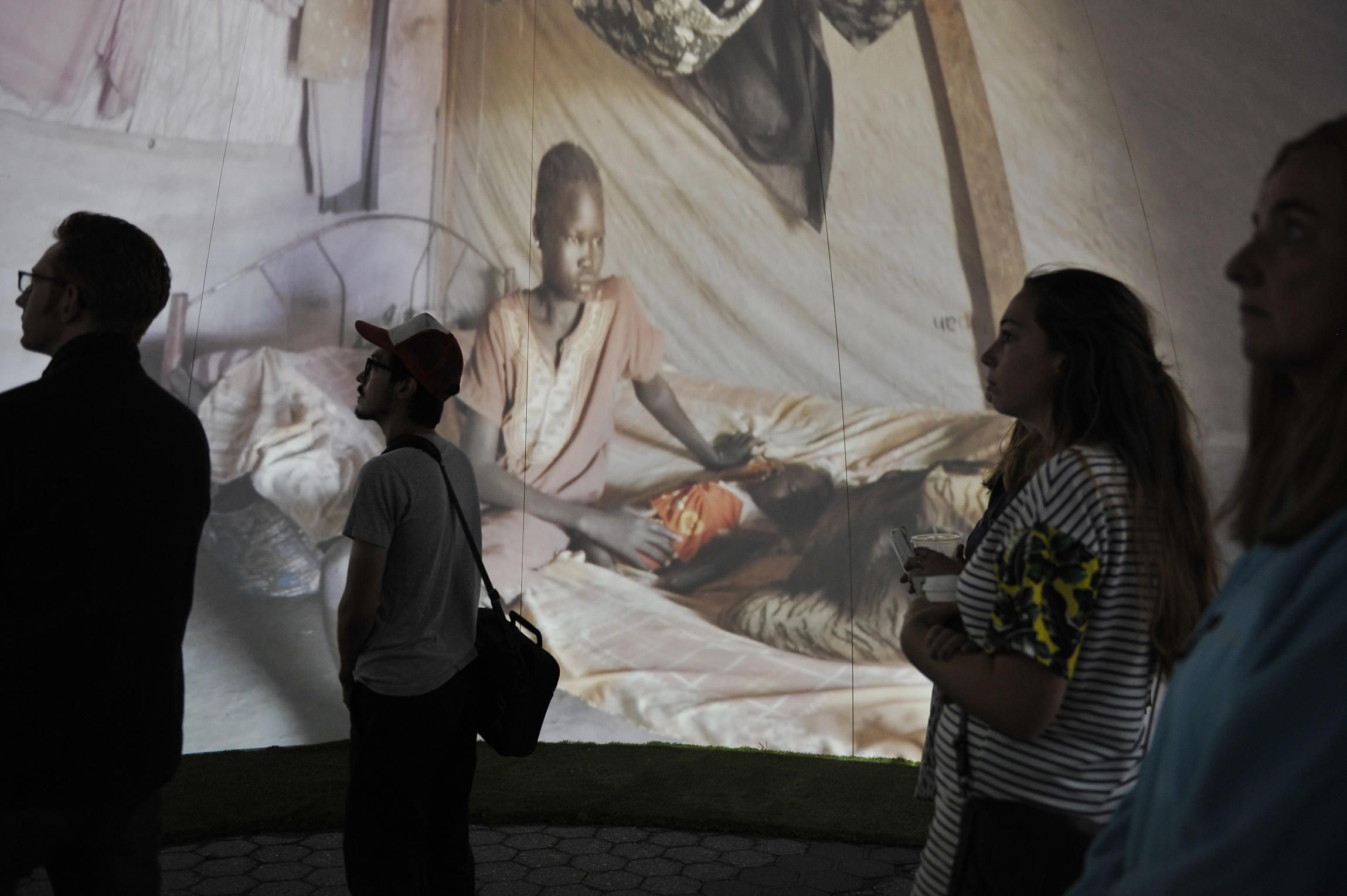How tech helps tell the story of refugees

A new immersive exhibit by Doctors Without Borders uses VR and 360 video to give a glimpse into the lives of people forced to flee violence.
When you first enter Doctors Without Borders’ “Forced From Home” interactive exhibit, you’re assigned a country of origin and a status. I was an internally displaced person from Burundi. But I could’ve been a refugee or migrant from South Sudan, Syria, Afghanistan or Honduras.
The idea of the exhibit is to put onlookers in the shoes of displaced people who’ve been forced to flee violence. It’s designed to simulate the travels of a refugee and comes with virtual reality films, a 360-degree movie dome and interactive tour.
Doctors Without Borders, an organization that provides medical care and humanitarian aid in more than 70 countries, put together the traveling exhibit to show the 65.6 million people worldwide who are now displaced. When these people leave home, they often face death, sickness, abandonment, persecution and loss of family.
“Our medical staff treat people uprooted by conflict and extreme violence all over the world,” said Jason Cone, executive director of Doctors Without Borders USA. “‘Forced From Home’ is an opportunity to bring our patients’ stories to US audiences, to humanize the refugee crisis.”
After I received my identity card telling me I was from Burundi, I was shown into a garage-size white dome. Inside, a 360-degree video was projected onto the walls. It started with footage of lifeboats out to sea near Greece and told the stories of Syrian refugees looking for a place to land.
The short movie went on to show the lives of refugees living in Tanzania, Lebanon and Mexico. It ended in a refugee camp in South Sudan populated with tents as far as the eye could see. Here, some people have lived without adequate food or housing for years.
My tour guide was Donna Canali, who has been a field nurse and medical team leader on 12 assignments around the world with Doctors Without Borders. She’s seen firsthand what displaced people’s lives are like.
“What I would most like people to get out of this is empathy,” she said. “They’re not so different from us.”
Canali guided my group through several booths, each one designed to focus on certain themes. For example, one booth gives us 30 seconds to gather placards that show what we’d bring if we were forced to flee. We could bring money, a passport, water, a wheelchair, pets or medicine. But at the end, we’re told to get rid of something because we won’t be able to carry it all.
Another booth shows the basic needs people have in refugee camps. Along with food, water, latrines and clothes, there are also solar panels used for charging cell phones. Canali explains that phones help displaced people correspond with their families back home.
“One of the most important things is communication,” Canali said.
The tour ends in a virtual reality booth set up with a dozen stools. I’m given a headset and earphones and can choose what refugee location to visit: Mexico, South Sudan, Lebanon, Iraq or Tanzania. Now I can see what it’s actually like to be from Burundi and live in a Tanzanian camp that’s forested, muddy and dotted with beige canvas tents.
“Once you’re in that world, there’s no distraction,” said Melissa Pracht, who produced the videos for Doctors Without Borders. “It’s as close as you can get to putting people in a real refugee camp,”
“Forced from Home” is free and currently in Oakland, California, through November 5. It will then be in Santa Monica, California, from November 13 to 19.
CNet news